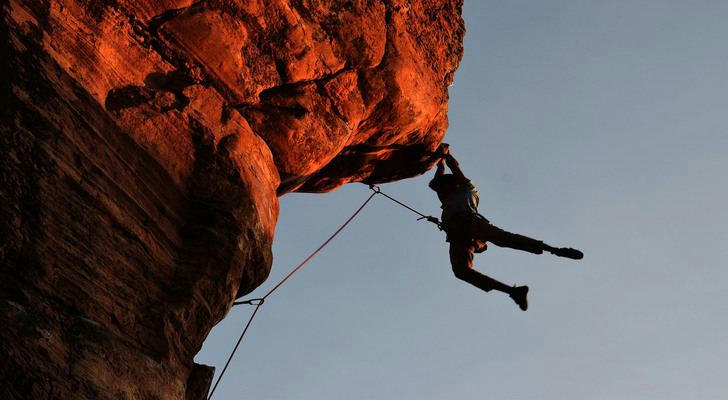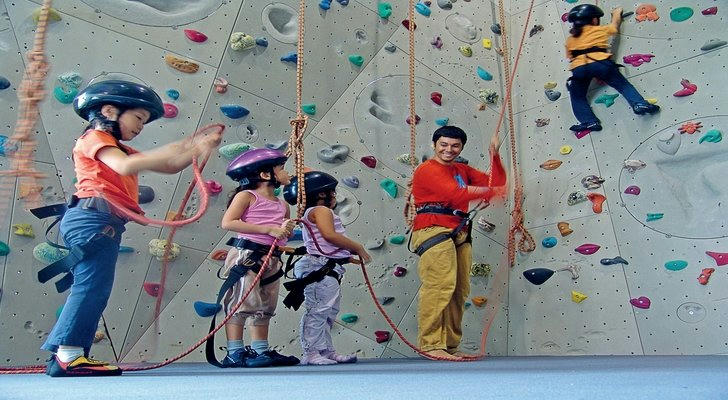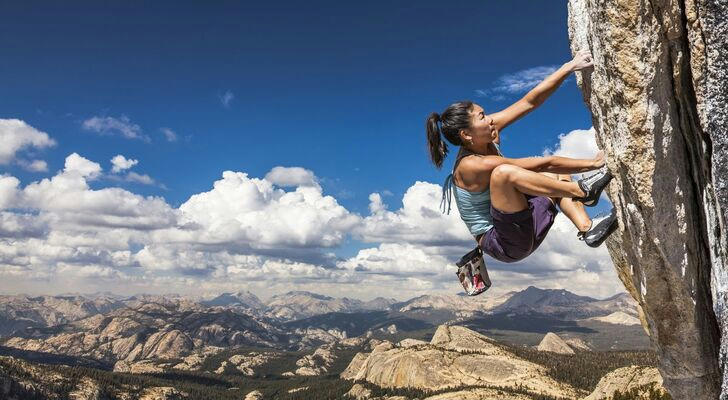Outdoor Rock Climbing: A Deep Connection with Nature

Outdoor rock climbing is more than just a sport—it's an opportunity to connect with nature in a way that's unlike any other activity. As the climbing community continues to grow, more and more people are discovering how satisfying it can be both physically and mentally. From the thrill of scaling a rock face to the peaceful moments of being surrounded by the natural world, outdoor rock climbing offers an experience that's hard to beat. But what makes this activity so unique and satisfying? This article explores the deep connection between outdoor rock climbing and nature, and why it's a must-try activity for nature lovers and adventure seekers alike.
1: A Natural Playground.
Nature’s beauty is often most pronounced when seen from a vantage point that can only be reached through effort, and rock climbing offers that unique perspective. Unlike indoor gyms, outdoor climbing places individuals directly in nature’s domain, with each route providing a different experience depending on the location, weather, and time of day.
Steps to Finding the Best Outdoor Climbing Spots:
• Research Local Climbing Areas: Websites like Mountain Project or guidebooks provide information on routes and difficulty levels.
• Check Weather Conditions: Rock surfaces can become slippery when wet, increasing risk.
• Understand the Climbing Style: Whether it’s bouldering, sport climbing, or traditional climbing, different areas cater to various climbing styles.
According to the Outdoor Foundation's 2021 Outdoor Participation Report, nearly 8.7 million Americans engaged in climbing activities, with outdoor climbing seeing steady growth. This increasing interest highlights the sport’s broad appeal and the unique experiences it offers in natural settings.
2: Mindful Engagement with the Environment.
One of the most striking aspects of outdoor climbing is how it encourages mindfulness. Climbers must focus their attention on each movement, ensuring they place their hands and feet with care, all while remaining aware of the natural surroundings. The practice of tuning into the environment—listening to the wind rustling through the trees or hearing birdsong overhead—helps create a stronger connection with nature.
Tips to Enhance Mindfulness While Climbing:
• Practice Controlled Breathing: Deep, rhythmic breaths can help maintain focus.
• Take Breaks to Observe Surroundings: Appreciate the landscape during rest stops.
• Stay Present in the Moment: Focus on each hold and movement rather than rushing to the top.
A study published in Frontiers in Psychology found that engaging in outdoor activities like rock climbing can reduce stress and improve overall mental well-being. The combination of physical exertion and natural immersion plays a significant role in promoting mental clarity and emotional stability.

3: Physical Fitness and Nature’s Challenge.
In addition to the mental and emotional benefits, outdoor climbing offers a full-body workout. Rock climbing builds strength, flexibility, and endurance. It’s not just about climbing up the wall; it’s about using nearly every muscle group, from the core and legs to the arms and fingers, to navigate challenging routes.
Training Tips for Outdoor Climbing:
• Improve Grip Strength: Hangboard exercises and grip trainers help develop forearm endurance.
• Build Core Stability: Planks and leg raises enhance balance and control.
• Increase Flexibility: Stretching routines focusing on the hips, shoulders, and legs improve reach and movement efficiency.
According to the American Council on Exercise, rock climbing can burn between 500 to 900 calories per hour, depending on intensity. This makes it an effective workout for cardiovascular health and muscle development, rivaling traditional forms of exercise like running and swimming.
4: A Sense of Accomplishment and Connection.
There's something deeply rewarding about the process of climbing outdoors that can’t be replicated in a gym setting. Climbers often talk about the feeling of personal triumph when they reach the summit of a particularly difficult climb, especially after overcoming the mental and physical challenges along the way. These experiences forge a stronger bond with the environment, as climbers recognize the effort it took to scale a rock face and appreciate the natural beauty surrounding them.
Steps to Build Confidence in Climbing:
• Start with Beginner-Friendly Routes: Gain experience on well-traveled climbs before tackling advanced routes.
• Learn from Experienced Climbers: Partnering with seasoned climbers offers valuable techniques and safety insights.
• Celebrate Small Wins: Acknowledge improvements in technique, endurance, and problem-solving.
A 2022 study published in the Journal of Outdoor Recreation and Tourism found that individuals who engaged in outdoor climbing reported higher self-efficacy and increased resilience in handling daily challenges. This reinforces the idea that climbing contributes to both personal growth and confidence.

5: Environmental Awareness and Conservation.
Outdoor rock climbing has a unique way of fostering environmental consciousness. As climbers engage more deeply with nature, they often develop a greater appreciation for preserving it. Many climbing areas are located in national parks or protected natural reserves, so climbers are often reminded of the importance of conservation efforts. Additionally, climbers are part of a growing movement that emphasizes Leave No Trace principles—guidelines designed to minimize the human impact on outdoor environments.
Best Practices for Sustainable Climbing:
• Stick to Established Trails: Avoid trampling vegetation by staying on designated paths.
• Pack Out Trash: Always leave climbing sites cleaner than they were found.
• Respect Wildlife: Avoid disturbing nesting birds or other animals near climbing routes.
• Use Chalk Sparingly: Excess chalk marks can disrupt the natural look of the rock face.
The Access Fund, a leading climbing advocacy group, reports that over 6,000 climbing areas in the United States require active conservation efforts due to increased foot traffic and environmental impact. By adhering to sustainable climbing practices, climbers contribute to preserving these natural landscapes for future generations.
Conclusion.
Outdoor rock climbing offers a unique and thrilling way to connect with nature. The activity combines physical fitness, mental engagement, and environmental appreciation, making it an enriching experience on many levels. Whether enjoying the stunning views, pushing the limits of physical endurance, or simply finding peace in nature, outdoor rock climbing provides an opportunity to engage with the natural world like few other activities. The sense of accomplishment, connection, and the challenge of scaling new heights is what makes climbing outdoors such a compelling and rewarding experience.
For those seeking adventure and a way to deepen their bond with nature, outdoor rock climbing is an activity worth exploring. Not only does it bring an incredible sense of achievement, but it also offers an opportunity to nurture both physical and mental well-being while enjoying the beauty of the natural world. Backed by research and the growing popularity of climbing, this activity continues to prove itself as a valuable and sustainable way to experience nature.
